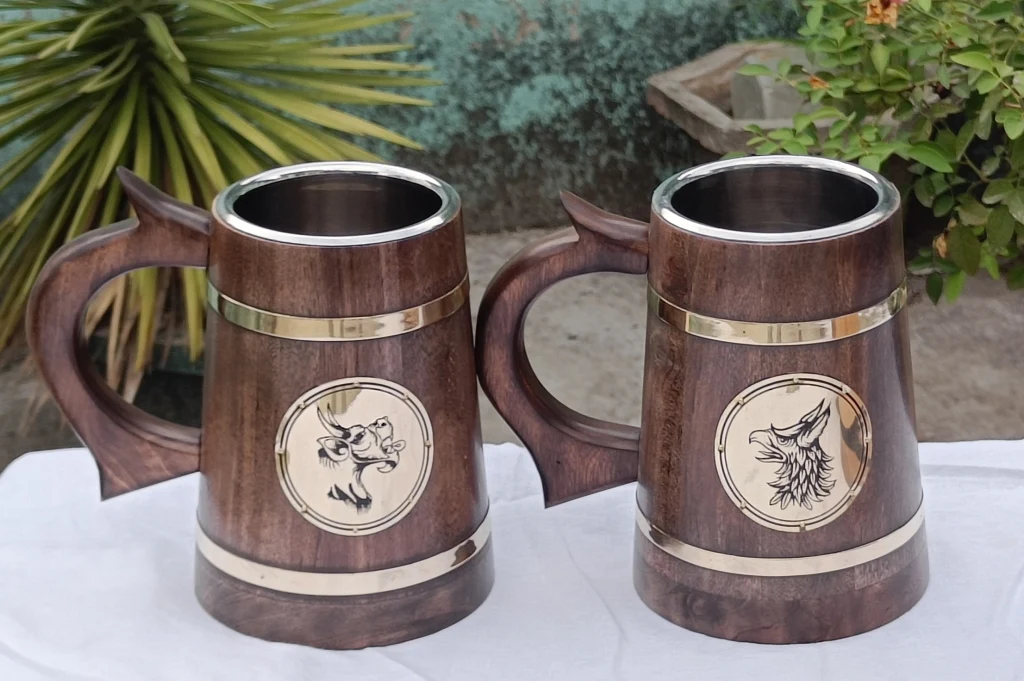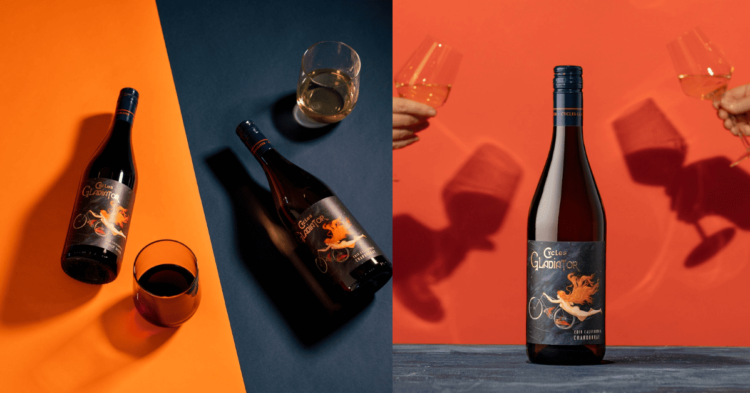Introduction: The Global Phenomenon of Gladiator Grain Spirits
Grain spirits, produced from fermented grains and known for their versatility and clarity, are widely consumed across the globe. However, among these, there are a select few brands that rise above the rest, becoming not just beverages but cultural symbols. One such brand is Gladiator Grain Spirits. Known for its bold marketing, unique flavor profiles, and historical ties to the ancient world, Gladiator Grain Spirits has woven itself into the fabric of global drinking culture.
This article delves into the culture and influence of Gladiator Grain Spirits. From its creation to its impact on the world of spirits and its ability to embody a modern yet historically rich identity, we will explore what makes Gladiator Grain Spirits stand out and what it symbolizes for both its loyal users and the broader public.
1. The Origins of Gladiator Grain Spirits: A Deep Historical Connection
The Birth of Gladiator Grain Spirits
The brand name “Gladiator” immediately invokes images of ancient Roman warriors, strength, and endurance. But how did a modern grain spirit come to embrace this historically rich symbol? Gladiator Grain Spirits was founded with the intention of bridging the past with the present, using ancient traditions to create a contemporary product. Produced in small batches, its grain spirits use methods passed down through generations of distillers, combining modern techniques with centuries-old recipes.
- A Nod to the Ancient Romans
The term “Gladiator” comes from the Roman Empire, where gladiators were revered as symbols of power and honor. Gladiator Grain Spirits, though a contemporary product, taps into this legacy by drawing parallels between the strength required in both the distilling process and the gladiator’s life. - The Ingredients
Gladiator Grain Spirits uses a blend of locally sourced grains, which include barley, rye, and wheat. The unique mix of grains provides a complex yet clean spirit that embodies the character of the Mediterranean climate and culture.
Italy’s Role in the Creation of Gladiator Grain Spirits
Although grain spirits are produced worldwide, Gladiator Grain Spirits is deeply rooted in Italy. The country’s long history of spirits production—especially in the context of its world-famous wines—plays a significant role in the spirit’s identity.
- The Influence of Italian Distilling Culture
Italy has a rich distilling culture, producing a variety of spirits such as grappa, amaro, and of course, limoncello. Gladiator Grain Spirits borrows from this tradition while adding its own twist, positioning itself as a premium product that celebrates both Italian heritage and contemporary craft spirits.
2. Gladiator Grain Spirits: A Symbol of Strength and Courage
The Gladiator Symbol
The connection between Gladiator Grain Spirits and the symbol of the gladiator is more than just branding—it’s about identity. Gladiators in ancient Rome represented bravery, strength, and honor, virtues that are conveyed in the product’s marketing and packaging. The imagery of the gladiator’s armor and stance, often depicted on the label, serves as a metaphor for the bold flavor and the unwavering quality of the spirit.
- Branding Strategy
The Gladiator brand’s use of the gladiator image appeals to a broad range of consumers. It suggests not only strength and power but also resilience, making it a fitting symbol for the spirit itself. By connecting the product to such a powerful and universally recognized symbol, the brand achieves a connection that goes beyond the liquid inside the bottle.
Embodying Ancient Traditions in Modern Times
While the name evokes images of warriors and the ancient Roman empire, Gladiator Grain Spirits also incorporates the contemporary spirit of innovation. The brand bridges the gap between antiquity and modernity, positioning itself as both timeless and forward-thinking.
- Craftsmanship and Quality
Gladiator Grain Spirits emphasizes quality craftsmanship, which ties back to the Roman tradition of expertise in creating fine goods. Just as the ancient Romans produced exquisite weapons and artifacts, today’s distillers of Gladiator Grain Spirits focus on producing a product that is both precise and exceptional.
3. The Global Influence and Cultural Impact of Gladiator Grain Spirits
Gladiator Grain Spirits in the International Market
Since its introduction, Gladiator Grain Spirits has expanded globally, quickly becoming a symbol of luxury and craftsmanship in the spirits market. But how did a brand named after ancient gladiators become a global phenomenon?
- Entering the Global Scene Gladiator Grain Spirits made its mark by tapping into the growing interest in high-quality, authentic spirits. Initially available in select European markets, it soon found its way into the United States, Asia, and South America, markets that are home to sophisticated and adventurous spirit drinkers. The brand’s commitment to premium production methods and its evocative story contributed to its quick acceptance among connoisseurs.
- Cultivating a Global Identity
Gladiator Grain Spirits managed to resonate with diverse cultures due to its strong brand identity. In the United States, for example, it appealed to consumers interested in both craft spirits and historical symbolism. Similarly, in countries like Japan, where craftsmanship and quality are highly valued, the brand’s commitment to traditional production methods made it particularly appealing.
Adapting to Diverse Markets
In its journey toward global expansion, Gladiator Grain Spirits has adapted its marketing and branding strategies to appeal to local tastes while maintaining its core identity.
- Tailoring for Cultural Relevance
In Europe, where grain spirits like vodka and gin have a long history, Gladiator Grain Spirits found a market among those looking for new, high-quality options. In Asia, it positioned itself as a luxury product for those interested in unique, handcrafted spirits with historical significance. - Collaborations and Cultural Partnerships
Gladiator Grain Spirits has worked on multiple collaborations with bars, restaurants, and cultural institutions across the world. These partnerships help elevate the brand while positioning it as a premium choice for those seeking refined drinking experiences.

4. Gladiator Grain Spirits and the Changing Landscape of Modern Spirits
The Rise of Craft Spirits
As the world of spirits undergoes a renaissance, with consumers increasingly seeking artisanal, handcrafted beverages, Gladiator Grain Spirits has emerged as a key player in the craft spirits movement. The focus on quality over mass production, combined with the brand’s strong connection to its origins, makes it part of a new wave of spirits that prioritize authenticity.
- Craft Distilling and Authenticity
Craft spirits are defined by their attention to detail, small batch production, and commitment to quality. Gladiator Grain Spirits’ artisanal approach—slow distillation, meticulous aging, and the use of high-quality ingredients—fits squarely into the ethos of the craft distilling movement.
Innovating within Tradition
Despite its historical branding, Gladiator Grain Spirits continues to innovate within the confines of traditional spirit-making. From experimenting with aging processes to exploring new ingredients, the brand ensures that it remains relevant to modern consumers while respecting the time-honored practices that define great distilling.
- The Product Range Gladiator Grain Spirits isn’t just about one product; it offers a range of spirits, from clear, crisp vodkas to more complex and aged grain spirits. Each product in the range maintains the same quality and commitment to excellence, allowing consumers to experience various expressions of the Gladiator spirit.
5. Gladiator Grain Spirits and Its Influence on Consumers
A Wine and Spirits Culture Revolution
Gladiator Grain Spirits, much like other premium spirits brands, has had a cultural impact beyond the product itself. It has helped shape the way that people perceive and consume spirits.
- The Appeal to Younger Generations The brand’s contemporary branding, historical tie-ins, and focus on craftsmanship have made Gladiator Grain Spirits particularly attractive to younger, more sophisticated consumers. Millennials and Gen Z, who are highly attuned to branding and authenticity, have responded favorably to Gladiator’s unique position in the market.
- Influencing Social and Cultural Trends Gladiator Grain Spirits has played a part in the rise of cocktail culture. By introducing consumers to a premium option in the grain spirits category, it has helped to elevate the cocktail experience. It’s no longer just about mixing drinks; it’s about creating an experience—a cultural shift towards more nuanced and crafted drinking experiences.
Critical Reviews and Industry Recognition
The quality of Gladiator Grain Spirits has not gone unnoticed by critics and connoisseurs alike. Reviews often highlight the complexity and depth of flavor, making it a favorite in tasting competitions and spirit festivals. The brand’s marketing, strong cultural identity, and consistent quality have earned it recognition and a loyal following.
6. Conclusion: Gladiator Grain Spirits as a Cultural Icon
In conclusion, Gladiator Grain Spirits stands as a testament to the power of tradition, history, and branding. By drawing from the ancient power of gladiators, blending it with Italy’s rich distilling culture, and appealing to modern sensibilities, Gladiator Grain Spirits has secured a prominent place in the global spirits market. The influence of Gladiator Grain Spirits is evident not only in its ability to shape the conversation about craft spirits but also in its ability to bring ancient stories to life in a contemporary context.
Through careful attention to tradition, authenticity, and innovation, Gladiator Grain Spirits continues to influence the drinking culture worldwide. It serves as a reminder of the power of storytelling, the cultural significance of quality spirits, and the enduring appeal of a brand that can merge history with modern appeal.































